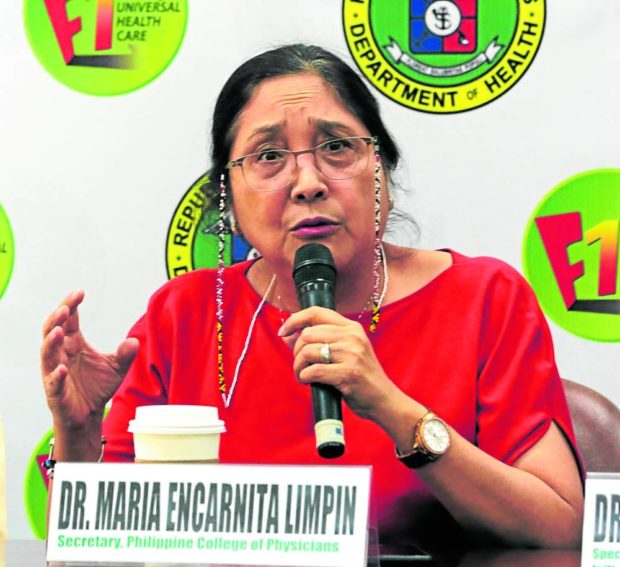
Maricar Limpin FILE PHOTO
MANILA, Philippines — People with preexisting conditions who got severely and critically infected with Delta and earlier strains of the coronavirus are more prone to develop “long COVID-19,” according to pulmonologist Dr. Maricar Limpin of the Philippine College of Physicians (PCP).
In a webinar on Friday, Limpin said that empirical findings show that those with diabetes, chronic kidney disease, hypertension as well as smokers who were severely and critically infected with the coronavirus are “highly predisposed” to long COVID-19.
Long COVID-19 symptoms last much longer in this same vulnerable group who contracted COVID-19 variants in the first two years of the pandemic, such as the original strain and the Delta line.
“What we noticed with the symptoms of the Omicron variant: they don’t last as long as the symptoms we found with Delta and the original COVID-19. Up to the Delta [strain], symptoms are much longer,” said Limpin, who is the former president of PCP.
While most eventually recover from long COVID-19, she encountered patients experiencing symptoms for as long as one year, she said.
COVID-19 symptoms are already considered a “long COVID-19” after four weeks of infection as a form of “sequelae,” or a long-term consequence of being severely infected.
According to the World Health Organization, people who contracted the virus could experience post-COVID-19 conditions, such as fatigue, shortness of breath, chest pain, persistent cough, trouble speaking, muscle aches, loss of smell or taste and fever.
In addition, they also could suffer from sleeping problems, cognitive dysfunction like confusion, forgetfulness, or a lack of mental focus and clarity, and even psychological effects like depression and anxiety.
Limpin likened these sequelae to scars as found in long COVID-19 cases with post-COVID fibrosis, or the scarring and thickening of lung tissue.
RELATED STORIES
Understanding ‘long COVID’ and how to prevent it
Most long COVID-19 patients will recover, but those with severe symptoms should seek help–experts
‘Long COVID’ possible in 10- 15% of infected persons — DOH